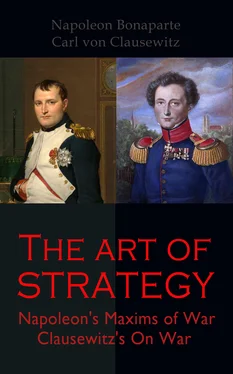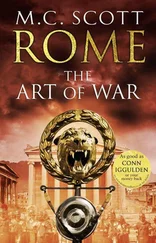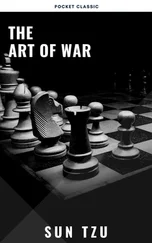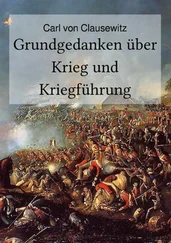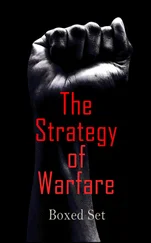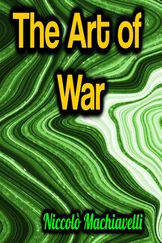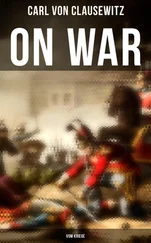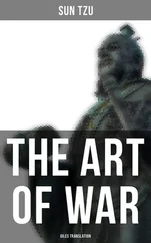As the human eye in a dark room dilates its pupil, draws in the little light that there is, partially distinguishes objects by degrees, and at last knows them quite well, so it is in War with the experienced soldier, whilst the novice is only met by pitch dark night.
Habituation to War no General can give his Army at once, and the camps of manœuvre (peace exercises) furnish but a weak substitute for it, weak in comparison with real experience in War, but not weak in relation to other Armies in which the training is limited to mere mechanical exercises of routine. So to regulate the exercises in peace time as to include some of these causes of friction, that the judgment, circumspection, even resolution of the separate leaders may be brought into exercise, is of much greater consequence than those believe who do not know the thing by experience. It is of immense importance that the soldier, high or low, whatever rank he has, should not have to encounter in War those things which, when seen for the first time, set him in astonishment and perplexity; if he has only met with them one single time before, even by that he is half acquainted with them. This relates even to bodily fatigues. They should be practised less to accustom the body to them than the mind. In War the young soldier is very apt to regard unusual fatigues as the consequence of faults, mistakes, and embarrassment in the conduct of the whole, and to become distressed and despondent as a consequence. This would not happen if he had been prepared for this beforehand by exercises in peace.
Another less comprehensive but still very important means of gaining habituation to War in time of peace is to invite into the service officers of foreign armies who have had experience in War. Peace seldom reigns over all Europe, and never in all quarters of the world. A State which has been long at peace should, therefore, always seek to procure some officers who have done good service at the different scenes of Warfare, or to send there some of its own, that they may get a lesson in War.
However small the number of officers of this description may appear in proportion to the mass, still their influence is very sensibly felt. 6Their experience, the bent of their genius, the stamp of their character, influence their subordinates and comrades; and besides that, if they cannot be placed in positions of superior command, they may always be regarded as men acquainted with the country, who may be questioned on many special occasions.
6.The War of 1870 furnishes a marked illustration. Von Moltke and von Goeben, not to mention many others, had both seen service in this manner, the former in Turkey and Syria, the latter in Spain—EDITOR.
BOOK II.
ON THE THEORY OF WAR
Table of Contents
CHAPTER I.
Branches of the Art of War
Table of Contents
War in its literal meaning is fighting, for fighting alone is the efficient principle in the manifold activity which in a wide sense is called War. But fighting is a trial of strength of the moral and physical forces by means of the latter. That the moral cannot be omitted is evident of itself, for the condition of the mind has always the most decisive influence on the forces employed in War.
The necessity of fighting very soon led men to special inventions to turn the advantage in it in their own favour: in consequence of these the mode of fighting has undergone great alterations; but in whatever way it is conducted its conception remains unaltered, and fighting is that which constitutes War.
The inventions have been from the first weapons and equipments for the individual combatants. These have to be provided and the use of them learnt before the War begins. They are made suitable to the nature of the fighting, consequently are ruled by it; but plainly the activity engaged in these appliances is a different thing from the fight itself; it is only the preparation for the combat, not the conduct of the same. That arming and equipping are not essential to the conception of fighting is plain, because mere wrestling is also fighting.
Fighting has determined everything appertaining to arms and equipment, and these in turn modify the mode of fighting; there is, therefore, a reciprocity of action between the two.
Nevertheless, the fight itself remains still an entirely special activity, more particularly because it moves in an entirely special element, namely, in the element of danger.
If, then, there is anywhere a necessity for drawing a line between two different activities, it is here; and in order to see clearly the importance of this idea, we need only just to call to mind how often eminent personal fitness in one field has turned out nothing but the most useless pedantry in the other.
It is also in no way difficult to separate in idea the one activity from the other, if we look at the combatant forces fully armed and equipped as a given means, the profitable use of which requires nothing more than a knowledge of their general results.
The Art of War is therefore, in its proper sense, the art of making use of the given means in fighting, and we cannot give it a better name than the “ Conduct of War .” On the other hand, in a wider sense all activities which have their existence on account of War, therefore the whole creation of troops, that is levying them, arming, equipping, and exercising them, belong to the Art of War.
To make a sound theory it is most essential to separate these two activities, for it is easy to see that if every act of War is to begin with the preparation of military forces, and to presuppose forces so organised as a primary condition for conducting War, that theory will only be applicable in the few cases to which the force available happens to be exactly suited. If, on the other hand, we wish to have a theory which shall suit most cases, and will not be wholly useless in any case, it must be founded on those means which are in most general use, and in respect to these only on the actual results springing from them.
The conduct of War is, therefore, the formation and conduct of the fighting. If this fighting was a single act, there would be no necessity for any further subdivision, but the fight is composed of a greater or less number of single acts, complete in themselves, which we call combats, as we have shown in the first chapter of the first book, and which form new units. From this arises the totally different activities, that of the formation and conduct of these single combats in themselves, and the combination of them with one another, with a view to the ultimate object of the War. The first is called tactics , the other strategy .
This division into tactics and strategy is now in almost general use, and every one knows tolerably well under which head to place any single fact, without knowing very distinctly the grounds on which the classification is founded. But when such divisions are blindly adhered to in practice, they must have some deep root. We have searched for this root, and we might say that it is just the usage of the majority which has brought us to it. On the other hand, we look upon the arbitrary, unnatural definitions of these conceptions sought to be established by some writers as not in accordance with the general usage of the terms.
According to our classification, therefore, tactics is the theory of the use of military forces in combat . Strategy is the theory of the use of combats for the object of the War .
The way in which the conception of a single, or independent combat, is more closely determined, the conditions to which this unit is attached, we shall only be able to explain clearly when we consider the combat; we must content ourselves for the present with saying that in relation to space, therefore in combats taking place at the same time, the unit reaches just as far as personal command reaches; but in regard to time, and therefore in relation to combats which follow each other in close succession, it reaches to the moment when the crisis which takes place in every combat is entirely passed.
Читать дальше
